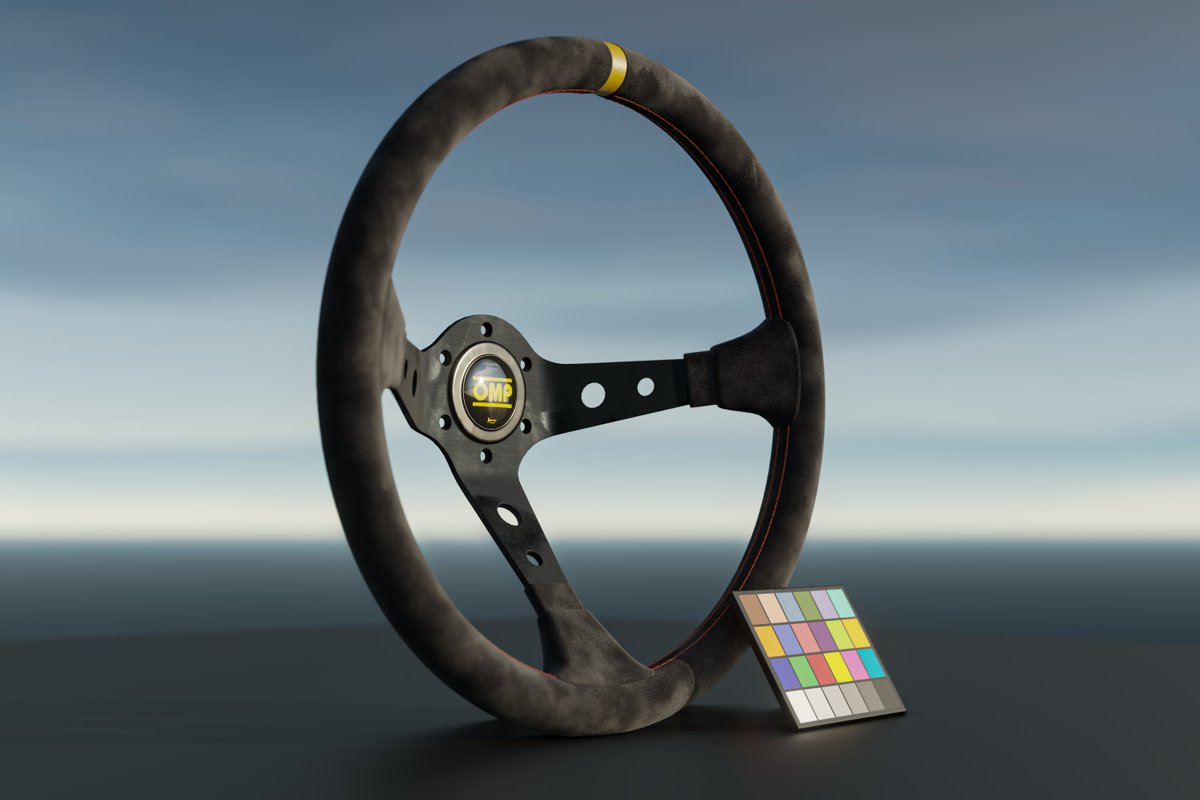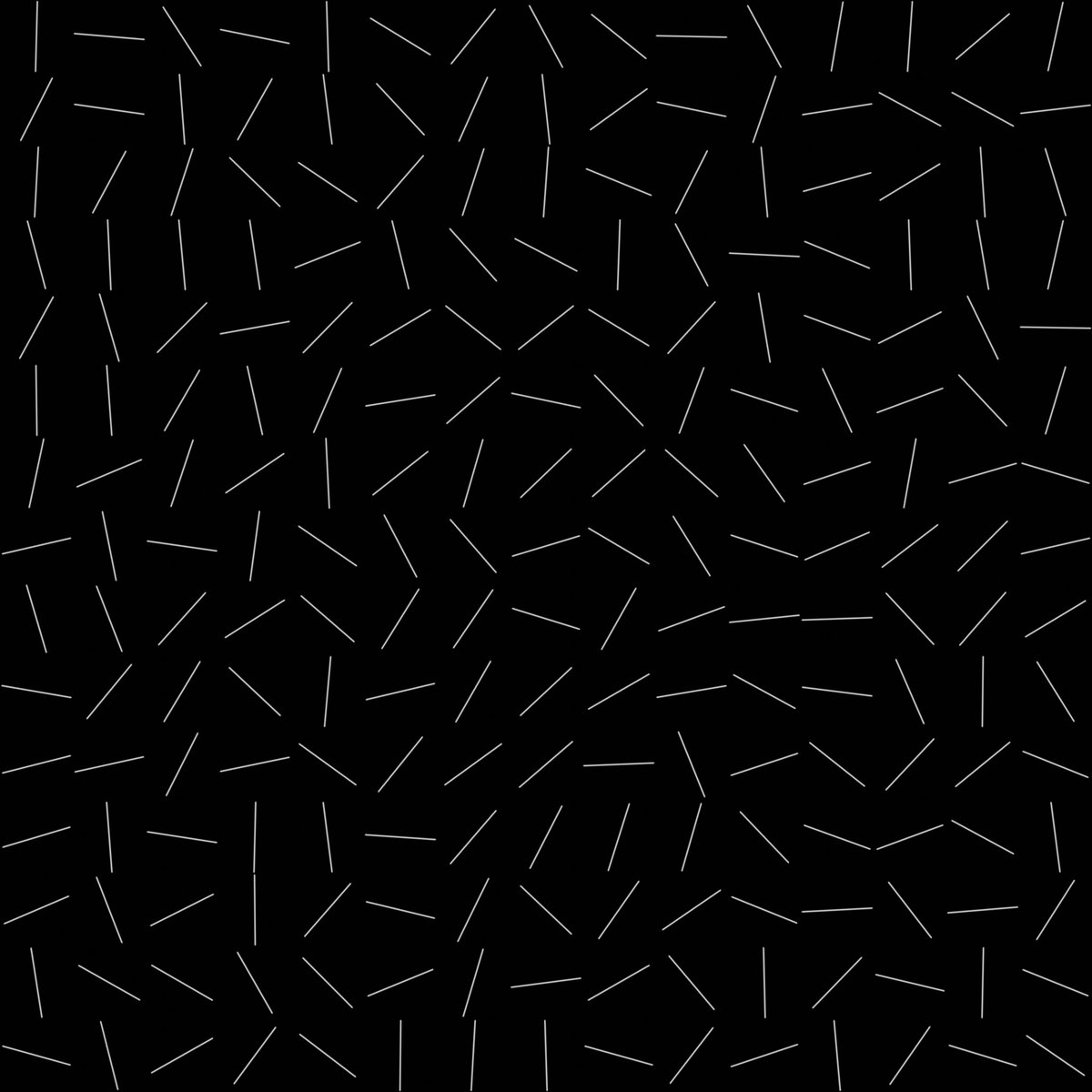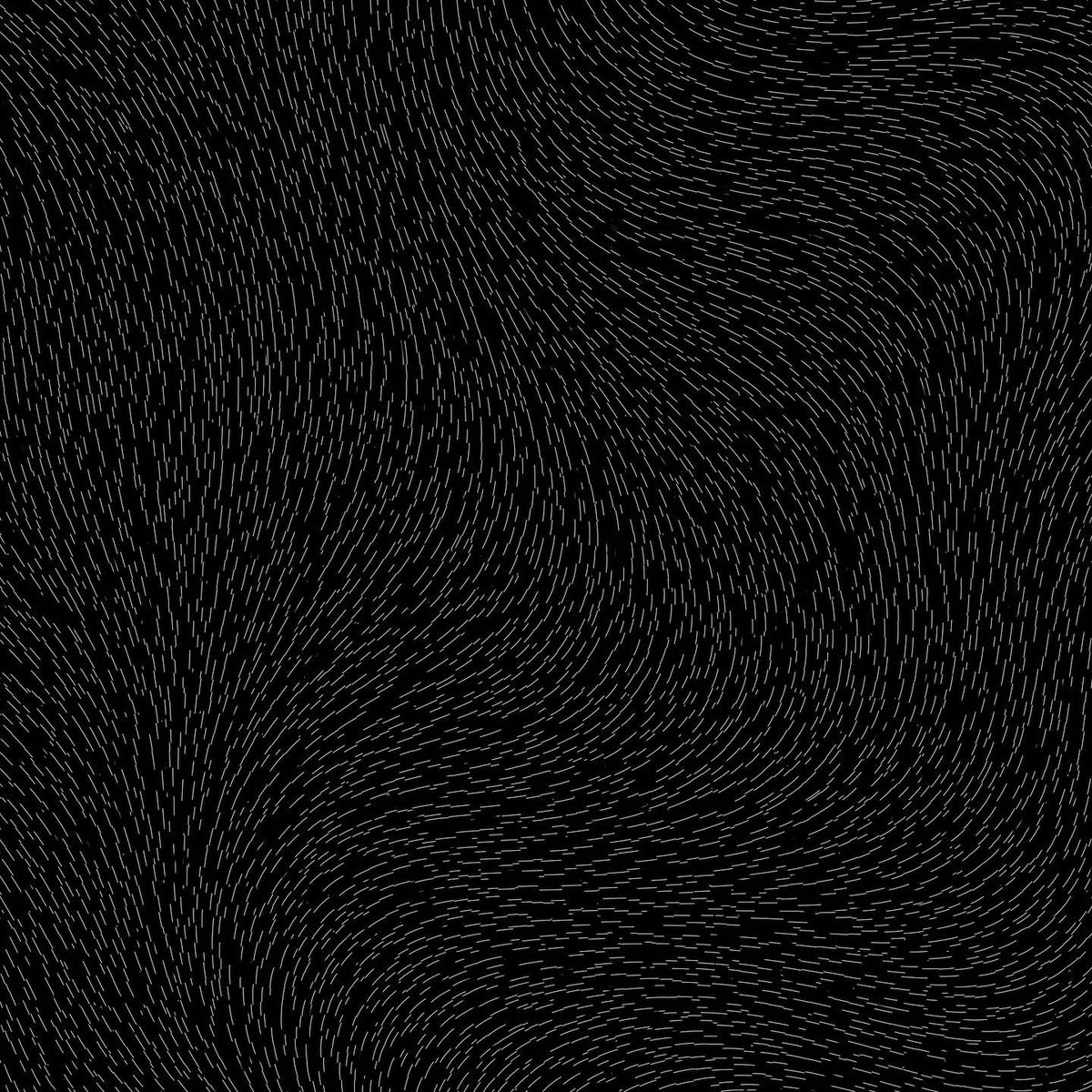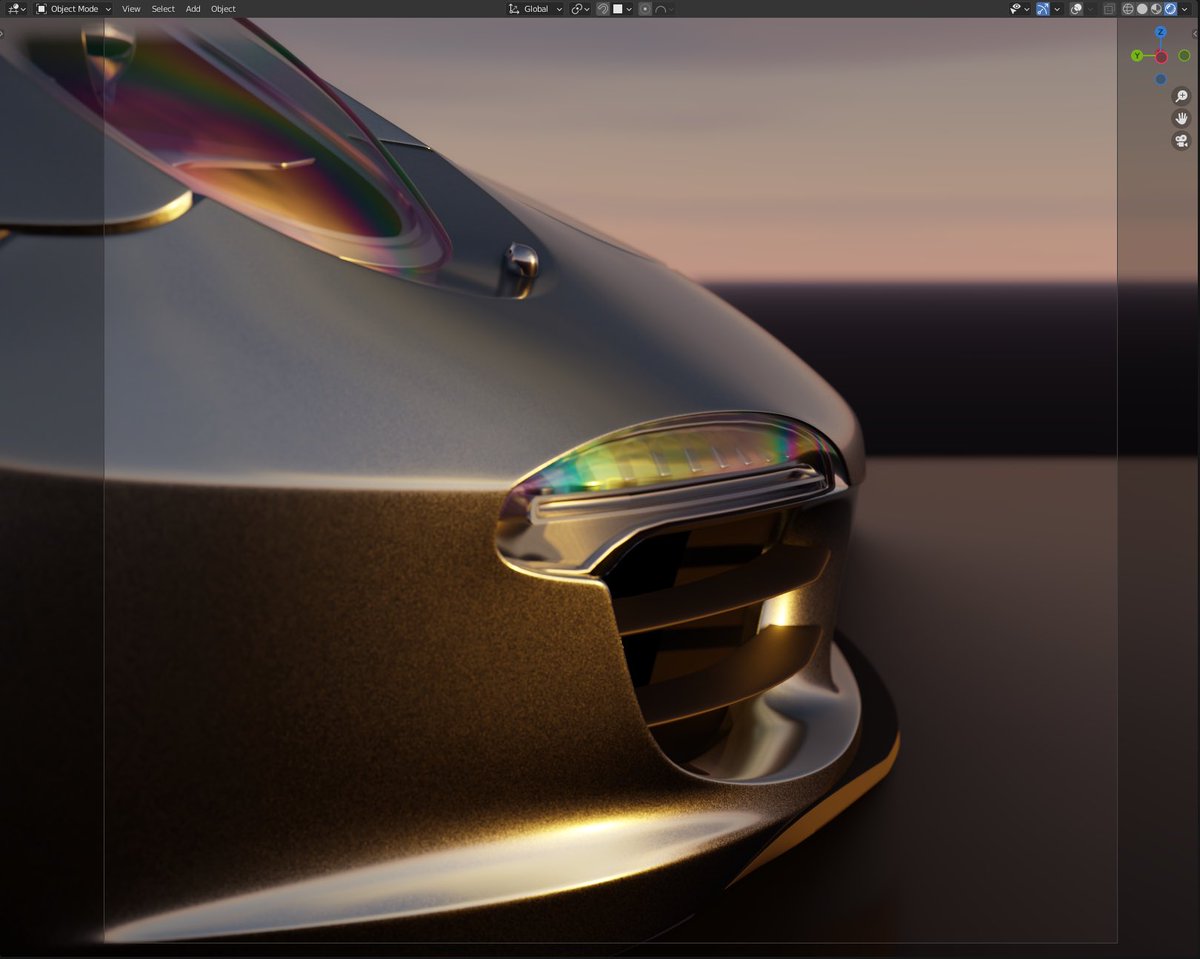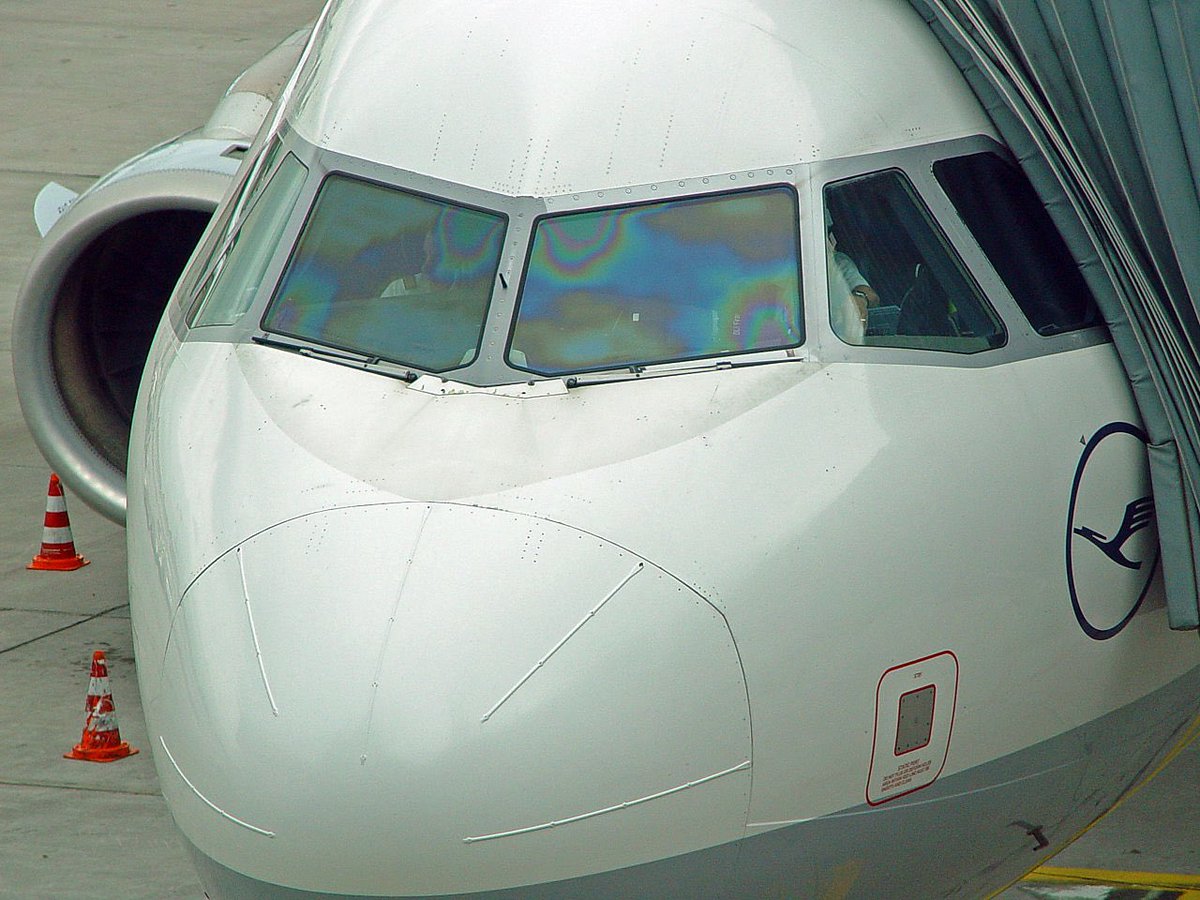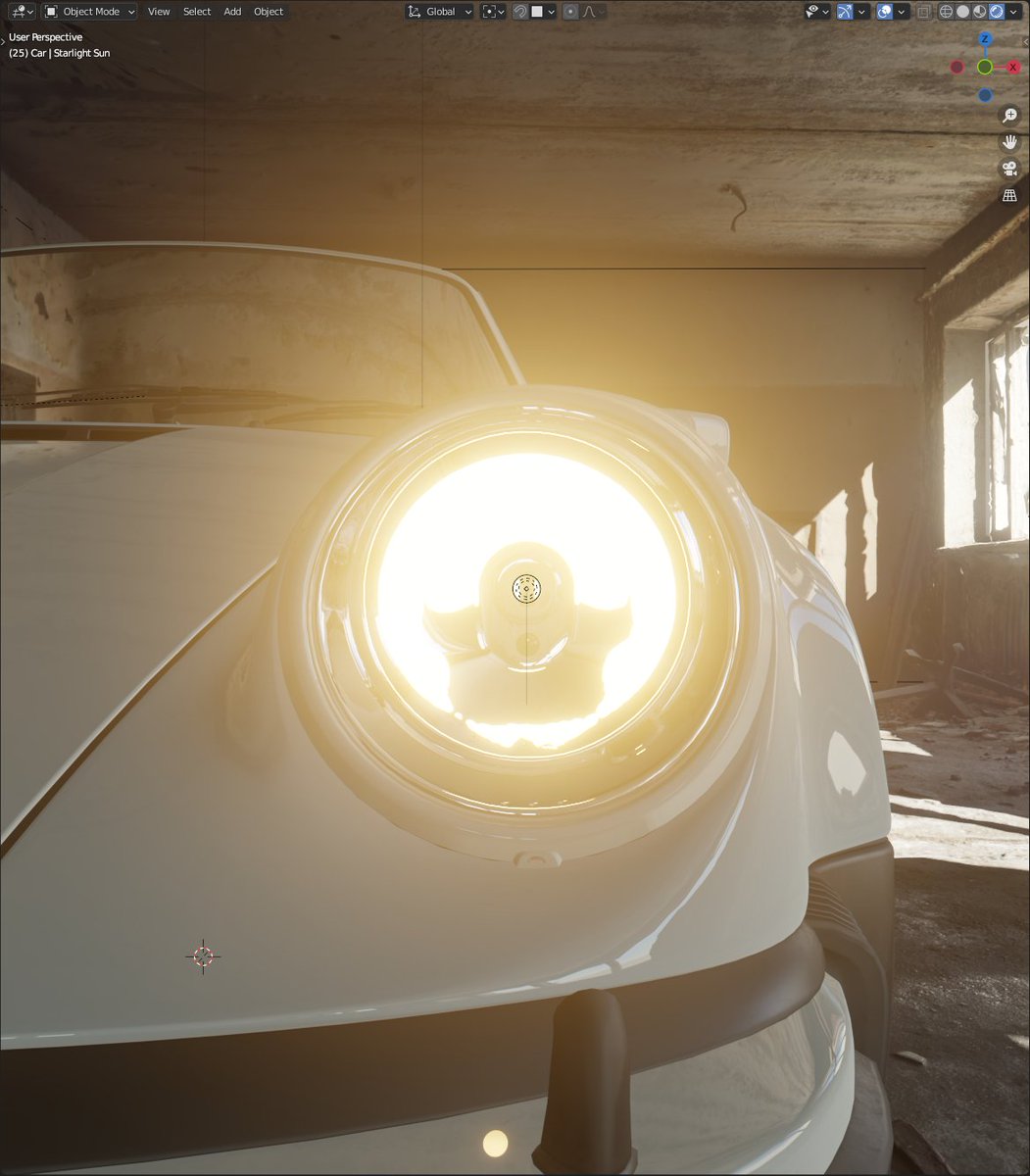
I'm now hooked on developing physical automotive materials in Eevee #Blender3d
This time - suede (Alcantara) with varying fiber direction and fingerprint-y anodized aluminum.
This time - suede (Alcantara) with varying fiber direction and fingerprint-y anodized aluminum.
The suede material is fully procedural (using Blender built-in Noise) It will look even nicer with real Alcantara surface texture. Fiber flow is again a larger noise color texture, converted to a normal map. 





steering wheel 3D model by Gurdeep Panesar
artstation.com/swedgedesign
artstation.com/swedgedesign
For suede material reference I used a real Porsche GT3 Alcantara steering wheel replica I use for sim-racing. 



Breakdown of the material.
1 - diffuse only
Suede is a really absorbent material - fibres absorb the light even more than a flat material. So the albedo color is close to black, those speckles are meant to be dust or skin flakes. The "suede" effect secret is in reflected light.
1 - diffuse only
Suede is a really absorbent material - fibres absorb the light even more than a flat material. So the albedo color is close to black, those speckles are meant to be dust or skin flakes. The "suede" effect secret is in reflected light.

2 - specular light only
Here is just specular light with a roughness map. Base roughness is close to 1.0. And fingerprints leave grease. I know, I overdid the effect, but it delivers the message.
Overall material feel - fine rubber.
Here is just specular light with a roughness map. Base roughness is close to 1.0. And fingerprints leave grease. I know, I overdid the effect, but it delivers the message.
Overall material feel - fine rubber.

3 - specular only + roughness + normal map
Normal map modulates and adds irregularities in the surface.
Now it feels more like rough leather.
Normal map modulates and adds irregularities in the surface.
Now it feels more like rough leather.

5 - sheen + normal map
There. This one alone, without diffuse and specular, sells the "suede" effect.
Suede is basically short fur.
Anisotropic reflections would make the effect even more convincing, but it does not work in Eevee, so a normal map alone is fine.
There. This one alone, without diffuse and specular, sells the "suede" effect.
Suede is basically short fur.
Anisotropic reflections would make the effect even more convincing, but it does not work in Eevee, so a normal map alone is fine.

• • •
Missing some Tweet in this thread? You can try to
force a refresh

